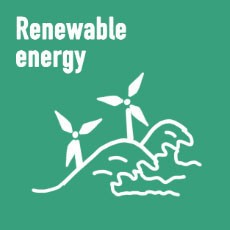Renewable Energy

This sector falls under the section – Electricity, gas, steam and air conditioning supply, which includes the activity of providing electric power, natural gas, steam, hot water and the like through a permanent infrastructure (network) of lines, mains and pipes. The size of the network is not fixed; also included are the distribution of electricity, gas, steam, hot water and the like in industrial parks or residential buildings. This sector includes the operation of electric and gas utilities, which generate, control and distribute electric power or gas (adapted from International Standard Industrial Classification of All Economic Activities (ISIC), Revision 4, Part 3, Section D).
Marine resources

Marine resources are materials and attributes found in the ocean that are considered to have value, whether that value is intrinsic or monetary. They include a huge number of things: biological diversity, fish and seafood supplies, oil and gas, minerals, renewable energy resources, tourism potential and unique ecosystems like coral reefs (Qamar , 2018). The ocean is the largest ecosystem on Earth; it is the planet’s life support system. Oceans generate half the oxygen we breathe and contain more than 97% of the world’s water. For this reason, the diversity and productivity of the world’s oceans is vital for humankind (Marine Conservation Institute, 2019).

Marine renewable energy
Renewable energy

Renewable energy refers to energy generated from sources that are naturally replenishing but flow-limited. Unlike fossil fuels, such as coal and oil, renewable energy will never run out. Renewable energy is virtually inexhaustible in duration but is limited to the amount of energy available per unit of time (U.S. Energy Information Administration, 2018). It is abundant in the environment, and can come from the sun, wind, running water, waves and biomass. Another important advantage is that renewable energy does not emit greenhouse gases or atmospheric pollutants during the process of generating electricity (GovHK, n.d.).

Renewable energy in Iceland and Hong Kong
Green technology

Green technology is a type of technology that is environmentally friendly. Its main purpose is to conserve nature, tackle problems related to the depletion of natural resources and to repair the negative impact of human activities, such as pollution and environmental degradation. The term ‘green technology’ is also known as ‘environmental technology’ or ‘clean technology’. These technologies are used in various aspects of our lives: from renewable energy and power storage, smart building innovations, green living technology, to smart transportation and mobility, waste management and recycling (Dasy, 2016; Babbitt, 2017).

